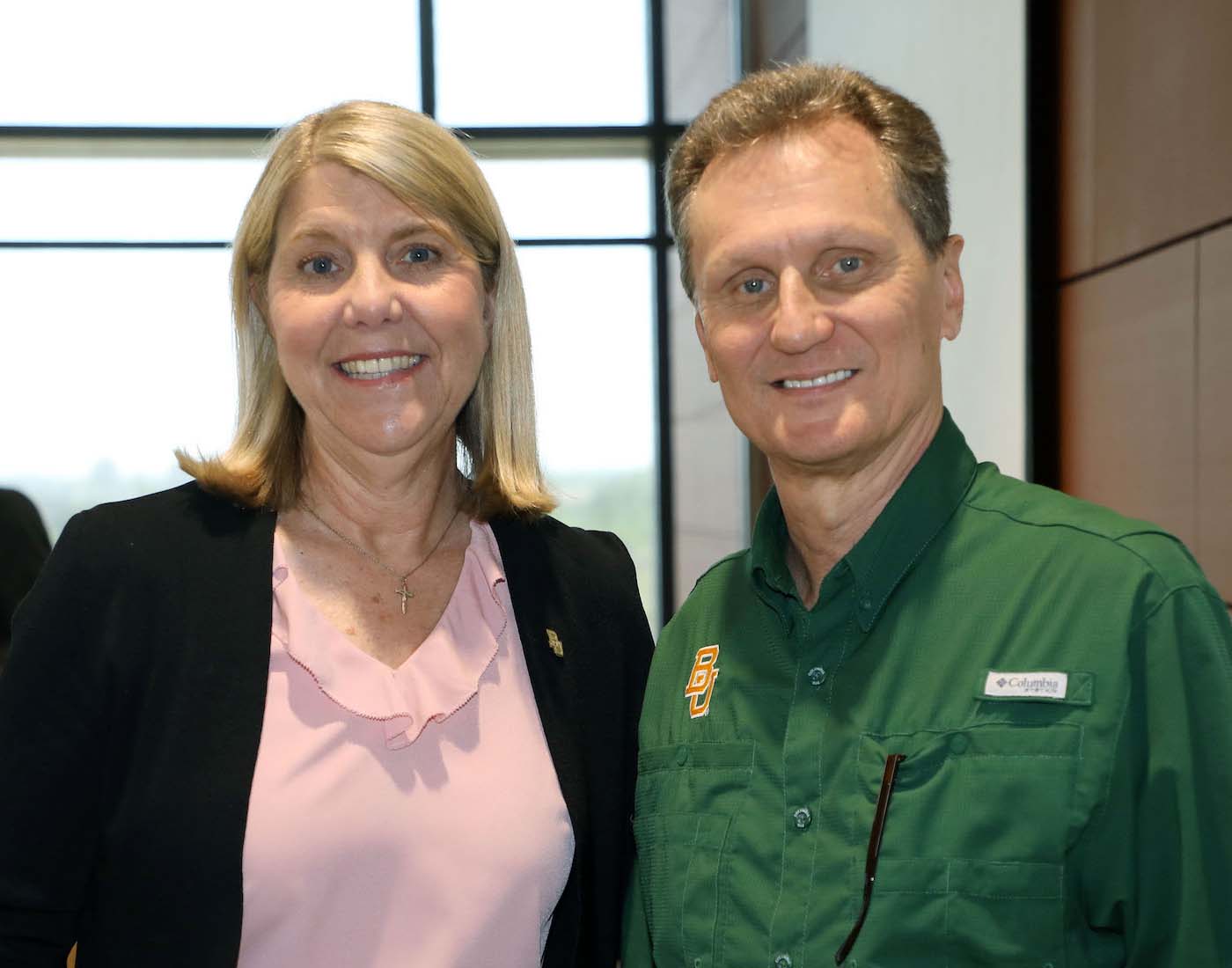Dr. Tommy Bryan Honored with Outstanding Faculty Award for Teaching
Recently, I was honored and quite humbled to be nominated by my department, then actually chosen by a university-wide committee of peers, to receive an outstanding teaching award. However, to be honest, the greatest “award” came when I discovered that several former students had written words of support as part of the nomination process. Receiving such an honor prompted me to reflect on my experiences over the past 30+ years of teaching here in the Baylor Mathematics Department. The classes I have taught generally fall in one of two categories: classes taken by STEM majors such as Precalculus and Calculus I, and classes taken by teacher education majors (primarily prospective elementary teachers and middle school math specialists). Although those two student populations are quite different, my goal for both groups has always been to promote the learning of mathematics as a “journey” and not just a “destination”, that mathematics is something to be “understood” as opposed to just “memorized”.
One of the greatest satisfactions of teaching has been when a student, or sometimes an entire class, embraces fully this (perhaps) new way of thinking about what it means to learn mathematics. This past spring semester, one of my classes (MTH 1316 - “Geometry and Measurement”, taken by teacher education students) came about as close to collectively achieving this goal as any class in recent memory. Some of the homework assignments in that class involve reading what I call “articles from the classroom”, where the teaching and learning of mathematics at K-12 is portrayed in a way that reflects what we are trying to accomplish in our own university-level class. In addition to having my students cull out and extend the mathematics being explored by the K-12 students in each article (e.g., why 180(n-2) determines the sum of the angles in any polygon, why all squares are rectangles but not all rectangles are squares, why doubling the dimensions of a prism does not result in doubling of surface area or volume), students also reflect on how the pedagogy in the K-12 classroom reflects the “doing of mathematics”. In one article where the K-12 students are discovering and classifying the symmetries of quilt blocks, the authors of the article state in conclusion, “But perhaps most attractive is the opportunity that quilt blocks offer for students to practice mathematics as mathematicians do: to make sense of problems and persevere in solving them, to reason abstractly, to construct viable arguments, to critique the reasoning of others, and to look for structure.”
In reflecting on this quote, a student in my class wrote, “Practicing mathematics in the ways we have done on this homework assignment and throughout the entirety of the semester (as mathematicians do) makes learning so much more meaningful and enjoyable, and the end result is so much more satisfying than answers obtained by punching numbers into a calculator. Thus, as a future teacher of mathematics, I think it is extremely important that I understand how mathematics is viewed and used by those who have dedicated their careers to it, and I want to help my students cultivate a similar sense of meaning and enjoyment. Furthermore, the critical thinking skills required to practice mathematics as a mathematician will benefit students in all areas of their education and in their lives outside of school.” Wow!! I couldn’t have said it any better! When students embrace the mathematical “journey” as this student has (along with her classmates), it reminds me why we do what we do and makes me want to continue to teach in the Baylor Mathematics Department... maybe for 30 more years?? '?
 Baylor President Linda Livingstone and Tommy Bryan.
Baylor President Linda Livingstone and Tommy Bryan.